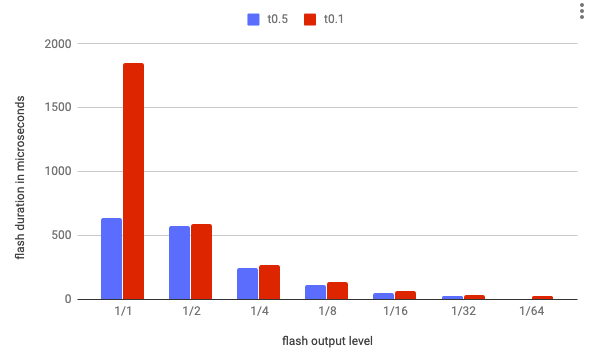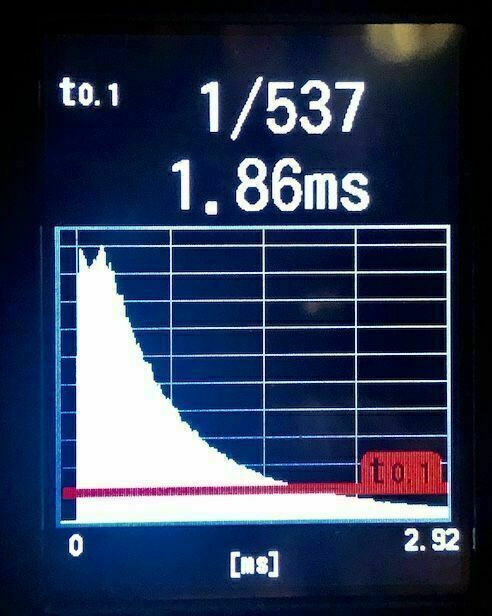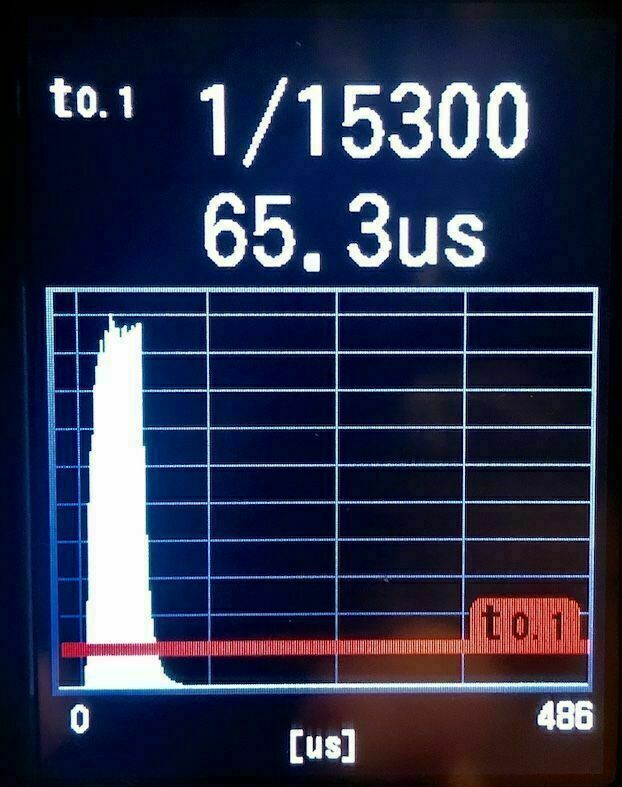Fujifilm EF-X20 Flash Duration Measured with Sekonic L-858D
Introduction
Surprising to many, when using Flash, the exposure is not affected by the shutter speed. The reason for this is simple, Flash is a very bright light but lasts for a very short duration, less than the usual shutter speeds used with the flash. So the shutter opens, the photo/sensor starts to get exposed to light, the flash fires but only very briefly, and this causes a lot of light to reach to the photo/sensor, and then curtain stays open for a little while more, and then it closes. This is especially true if flash output is reduced, because the regular flashes uses discharge and to reduce the flash output, they reduce the time the output is enabled, and not reduce the actual level of output. In a way, it is a pulse width modulation. This is not true for all types of flashes i.e. the studio flashes work differently. This phenomenon enables very high speed photography (higher than shutter speeds of 1/4000 or 1/8000) with simple equipment, where something like a water drop can be freezed in action.
On the other than, the exact specification of flash duration vs. flash output is usually not given by the manufacturers, I am not sure why. For example, Nikon SB-910 spec says its flash duration is 1/880 seconds (1136us) at full output, but says nothing about lower output levels, but it is known these flashes can reach around 1/40000 seconds or less at the lowest output level. I have a Fujifilm EF-X20 flash, and its specification does not mention anything about the flash duration.
I think measuring the flash duration normally requires a specialized equipment, something that can be triggered by a bright light, measure the light intensity, start and stop a very fast counter when the light intensity is over and below a certain threshold. The new Sekonic exposure meter L-858D (which costs around 600 Euros) is capable of measuring the flash duration between 1/40 seconds (25ms) and 1/55000 seconds (18 us). So I decided to make an experiment to measure the flash duration of Fujifilm EF-X20 flash with all manual output levels from 1/1 (full output) to 1/64. Keep in mind this is an amateur experiment, and I do not know how flash electronically works, so the numbers I present here might be different in different conditions.
Setup
I have the EF-X20 mounted on a small tripod powered by two AAA NiMH batteries. It is not connected to a camera, and I use the test button to fire it. The wide panel is not in use.
I have the Sekonic L-858D mounted on another small tripod, almost exactly at the same height as the flash and 50cm away. I kept the luminosphere retracted, and the measurements are done in Flash Duration Analysis Cordless Mode. Since I fire the flash with the test button, I also set the Number of Pre-flash to zero. T is set to 30, and ISO is set to 100 for all the measurements.
I did the experiment at night, so the room is pretty dark and have a consistent light condition during all the measurements.
Experiment
I measured the flash duration for t values of 0.5 and 0.1. This means the duration where the flash output is over 50% and 10%. t0.5 is usually called effective flash duration time, and t0.1 is called total flash duration time.
I did a test fire 3 times at each output level, (1/1, 1/2, 1/4, 1/8, 1/16, 1/32, 1/64), for t0.1 and for t0.5, so in total 6 fires at each output level.
Results
The measurements below are given in pairs, where the first number is in seconds (like shutter speed) and the second is in microseconds. Keep in mind, a shutter speed of 1/250 seconds is 4000us, which is longer than any measurement below.
Here is the Effective Flash Duration, t0.5 measurements:
| Power Level | Measurement 1 | Measurement 2 | Measurement 3 |
|---|---|---|---|
| 1/1 | 1/1560, 639 | 1/1570, 637 | 1/1740, 576 |
| 1/2 | 1/1740, 574 | 1/1760, 569 | 1/1750, 572 |
| 1/4 | 1/4120, 243 | 1/4080, 245 | 1/4040, 248 |
| 1/8 | 1/8710, 115 | 1/8710, 115 | 1/8550, 117 |
| 1/16 | 1/20200, 49 | 1/20200, 49 | 1/19300, 52 |
| 1/32 | 1/40400, 25 | 1/37000, 27 | 1/40400, 25 |
| 1/64 | NA, see text | NA | NA |
Here is the Total Flash Duration, t0.1 measurements:
| Power Level | Measurement 1 | Measurement 2 | Measurement 3 |
|---|---|---|---|
| 1/1 | 1/542, 1850 | 1/528, 1890 | 1/537, 1860 |
| 1/2 | 1/1690, 592 | 1/1690, 592 | 1/1680, 594 |
| 1/4 | 1/3770, 266 | 1/3800, 263 | 1/3830, 261 |
| 1/8 | 1/7530, 133 | 1/7530, 133 | 1/7660, 131 |
| 1/16 | 1/15300, 65 | 1/15300, 49 | 1/14800, 67 |
| 1/32 | 1/26100, 38 | 1/26100, 38 | 1/26100, 38 |
| 1/64 | 1/40400, 25 | 1/40400, 38 | 1/44400, 22 |
and here you can see both in a simple bar chart side by side:

Effective and Total Flash Durations
NA in t0.5 measurements of flash output 1/64 means the exposure meter is not able to measure this, most probably because the duration is less than 1/55000 sec (18us) which is the lowest value it can measure.
Sekonic also shows the Flash Waveform Graph as below.

Flash Waveform at full power (1/1)
As it can be seen in the above graph, flash output goes up to full almost immediately, then gradually decreases to zero. Pay attention the horizontal axis is in milliseconds not microseconds.

Flash Waveform at 1/16 power
When the flash output is 1/16, the flash waveform is a bit different and it is almost like a square wave, without a long tail like at the full output.
Remarks
The measurements are pretty consistent. The three measurements at the same power levels are sometimes exactly same and if not very close.
As expected and by definition, t0.1 durations are longer than t0.5.
At full output (1/1), there is a large difference (almost 3x) between t0.5 and t0.1 values, whereas in other output levels the difference is less (around 10-20%). This tells me that at 1/1 the flash output has a long tail, whereas in other levels the flash output falls rapidly to zero. This can be seen in the waveform graphs above.
Although there is almost no difference between the t0.5 values at full (1/1) and half (1/2) power levels, after half power, the durations change almost linearly with the power levels i.e. durations at 1/4 power is half of durations at 1/2 power).
Even with a simple flash like EF-X20, it is possible to reach speeds of 1/40000 (25us) and less, so with a proper setup it is possible to freeze the action that is too rapid even for a fast camera with a shutter speed of 1/8000.
Extras (iPhone 8 Plus)
I also did the same experiment with the flash of iPhone 8 Plus. Using the wide lens (f/1.8), the values of t0.5 and t0.1 are almost same and around 1/60 seconds (approx. 16000us). So it is very slow comparing to results above. I could not measure the telephoto lens (f/2.8), I think it is even slower than 1/40 seconds which is the minimum exposure meter can measure.
This work is licensed under a Creative Commons Attribution-NonCommercial-ShareAlike 4.0 International License.